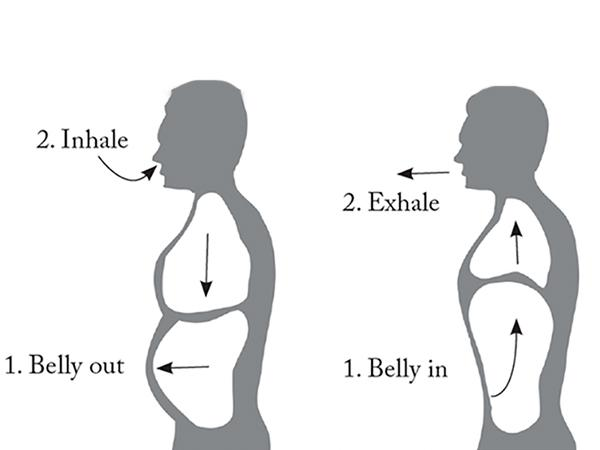
What is diaphragmatic breathing?
The diaphragm is a large muscle that separates the abdominal and thoracic cavities and it plays an important role in breathing. To inhale, the diaphragm contracts and pulls down to increase the volume of the lungs. This increased volume allows air to naturally flow into the lungs. When the diaphragm relaxes, the volume of the lungs decreases which forces air out. Many people don’t fully utilize their diaphragm when breathing and instead allow their chest to rise and fall with each breath. This puts a limit on the amount of oxygen you can get into the body. With diaphragmatic breathing, a person will consciously engage their diaphragm to fill their belly with air and utilize their abdominal muscles to exhale.
How do you practice diaphragmatic breathing?
Lie on your back placing one hand on your belly and the other on your chest. As you inhale, fill your stomach with air and feel it push into your hand. As you exhale, contract your abdominal muscles and allow your belly to fall down. Through both the inhale and exhale phases, the hand on your chest should remain still. As you become comfortable with this, you can practice diaphragmatic breathing in a standing or seated position. Make sure to keep your upper body relaxed, paying special attention to the muscles of your neck and shoulders.

What are the benefits of diaphragmatic breathing?
- Restores parasympathetic nervous system functioning to relieve stress and lower anxiety
- Strengthens the diaphragm and abdominal muscles
- Lowers heart rate and blood pressure
- Reduces fatigue
- Improves mindfulness
Jon Johnson, What to Know about Diaphragmatic Breathing, Medical News Today, 2020, https://www.medicalnewstoday.com
-Mia Ricciardi, Lead Aide
https://theeverydaydoctor.ca/diaphragmatic-breathing/

Comments